Office Address
No. 163 Economic Development ,Boning District
Phone Number
17715353051
No. 163 Economic Development ,Boning District
17715353051
Onshore exploration & production industry
Deep-sea mining industry
Floating production storage unit
Liquefied natural gas industry
Oil and gas pipeline transportation industry
Loading and storage system
Refining and petrochemical industry
Chemical industry
Nuclear power industry
Electric power industry
Hydraulic control valve solution
Hydraulic control valve is a valve controlled by water pressure. It is a valve that uses pipeline medium pressure as power to open, close and adjust. The hydraulic control valve consists of a main valve and attached conduits, needle valves, ball valves and pressure gauges. Depending on the purpose of use and functional location, the hydraulic control valve can evolve into a remote control float valve, pressure reducing valve, slow closing check Valves, flow controllers, pressure relief valves, hydraulic electric control valves, emergency shut-off valves and multi-function water pump control valves, etc. The pilot valve acts with changes in the liquid level and pressure of the medium. Since there are many types of pilot valves, they can be used alone or in combination, so that the main valve can have the function of independent and composite adjustment of water level, water pressure, flow, etc. . However, the main valve body is similar to a globe valve. When the valve is fully open, its pressure loss is much larger than that of other valves. The closer each opening loss coefficient is to the fully closed state, the greater the sharp increase. The larger the valve diameter, the greater the pressure loss. Significantly.
Force Control Valve Overview
Hydraulic control valves can be divided into three types according to their structure: diaphragm type, multi-function type and filter piston type. The working principle is the same. They are powered by the pressure difference △P between the upstream and downstream, controlled by the pilot valve, so that the diaphragm (piston) operates hydraulically differentially and is completely automatically adjusted by hydraulic power, so that the main valve disc is fully opened or fully closed or in the Adjustment status.
Diaphragm hydraulic control valve is the basis of all hydraulic control valves. It can be used with different control devices and functionally used in different occasions. For example, if it is equipped with a pressure reducing sub-valve, the entire valve is a pressure reducing valve; if it is equipped with a pressure relief sub-valve valve, the entire valve becomes a pressure relief valve, etc. The valves are available in a variety of calibers and flange standards and are widely used in municipal water supply, building water supply, air conditioning, fire protection, industrial water supply, electricity and irrigation facilities. The hydraulic control valve has a simple structure, and the only movable accessory in the valve body is the diaphragm. When repairing or maintaining the valve, there is no need to remove the entire valve from the pipeline. After only removing the upper cover, the diaphragm can be replaced.
Y-type hydraulic control valve is the basis of all hydraulic control valves. It can be used with different control devices and functionally used in different occasions. For example, if it is equipped with a pressure reducing sub-valve, the entire valve is a pressure reducing valve; if it is equipped with a pressure relief sub-valve valve, the entire valve becomes a pressure relief valve, etc. The valves are available in a variety of calibers and flange standards and are widely used in municipal water supply, building water supply, air conditioning, fire protection, industrial water supply, electricity and irrigation facilities.
The occurrence of pitting corrosion: When fluid passes through the valve cover at a high flow rate, the pressure will drop. When the pressure drops to the saturation pressure of the liquid, the liquid will vaporize, forming bubbles in the fluid. When these bubbles pass through the valve at high speed, they will cut the parts inside the valve, and the destructive power they produce is no less than the damage caused by impurities such as sediment and sand. The phenomenon of pitting corrosion also brings significant noise and vibration. When the control valve is used as a pressure reducing valve or pressure relief valve, the pressure difference between the two ends of the valve is too large, which may cause pitting corrosion.
Methods to prevent pitting corrosion:
1. If conditions permit, increase downstream pressure.
2. select a larger diameter valve to reduce the flow rate of fluid through the valve.
3. Use multiple valves in parallel to reduce the flow through a single valve and reduce the input pressure of the valve.
4. For pressure reducing valves, multiple valves can be used in series to reduce the pressure difference across a single valve.
Water Treatment Engineering
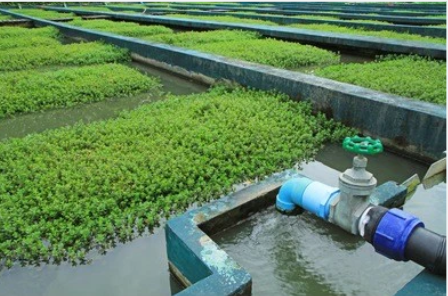
The water treatment system consists of primary, secondary and tertiary treatment stages through which tap water or wastewater is converted into drinking water. In the preliminary stage, very large particles such as plastic, paper, etc. are removed by screening with the help of bar screens, sand removal systems. In the primary stage, total suspended solids are removed with the help of clarifiers. Biological oxygen demand and chemical oxygen demand are removed by aeration process in the secondary stage. The tertiary system constitutes filters to remove the remaining total suspended solids. It also constitutes a reverse osmosis system to remove total dissolved solids and other ions. In the treated water tank, chlorination is carried out to disinfect and remove bacteria present in the water.
The water treatment system consists of different number of unit operations such as clarifiers, filters, reverse osmosis systems, etc. Flow, pH and pressure are indicators of whether these unit operations are functioning properly. When these parameters deviate from the standard values, the signals from the flow meter, pH meter, pressure transmitter are sent to the SCADA direct control system, which sends electrical signals or supplies air to the actuators of these automatic valves to open and close.
New energy industry field
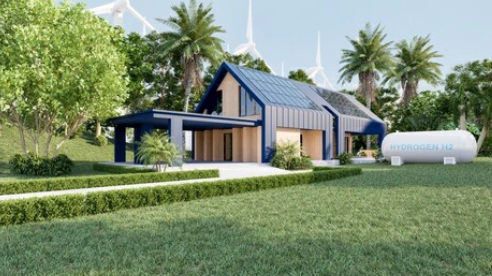
With the continuous development of the new energy industry, valves have played an increasingly important role in it. Valves are one of the most critical equipment in the energy system, and their performance has an important impact on the efficiency and safety of energy conversion. In the field of new energy, the application scope and requirements of valves are also different, and we will introduce them one by one below.
In solar photovoltaic power generation systems, there are two common valves: check valves and regulating valves. Check valves are usually used to prevent backflow and ensure the stable operation of solar panels. The regulating valve is generally used to adjust the output power of solar panels to ensure the stability of the system. For large-scale solar power stations, due to the system requirements of high power, high pressure and high flow, the use of high-performance electric actuators and intelligent control systems can effectively improve the efficiency and safety of the system.
In the field of new energy industry, wind power generation systems, biomass power generation systems, and hydropower generation systems, these valves work together through automatic control systems to maintain the stability and safety of the system.
In short, valves are one of the indispensable equipment in the new energy industry. Different types of new energy equipment require different valves, and the materials and designs of valves also need to be adjusted according to actual conditions. Therefore, the selection of high-performance valves and intelligent control systems can greatly improve the efficiency and safety of new energy equipment.
Food Engineering
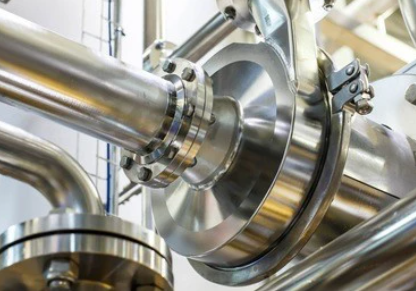
Valves are divided into food-grade and industrial-grade. The main difference is whether they are clean. Food-grade valves need to be installed in a closed environment or liquid, while industrial-grade valves can be installed in ordinary environments. For example, sterilization equipment, packaging equipment, beverage filling equipment and production lines have very high requirements for actuators and control valves, especially the hygiene level and leakage level.
Food-grade valves are made of SUS304, 316L, which can meet the special requirements of various media in the food and biopharmaceutical fields. Its smooth, seamless, and automatically emptied craft fluid channel is also very suitable for steam stepping on it. In the manufacturing process, quality control is strictly carried out according to FDA requirements. Computer three-dimensional design is used, and it is manufactured for requirements. Food-grade valves are suitable for food, beverages, dairy products, pharmaceuticals, brewing, beer, chemicals, petroleum and other industries.
Equipment Engineering

Valves are pipe accessories used to open and close pipelines, control flow direction, and adjust and control the parameters (temperature, pressure and flow) of the conveying medium. According to their functions, they can be divided into shut-off valves, check valves, regulating valves, etc.
Valves are control components in fluid conveying systems, with functions such as shut-off, regulation, diversion, prevention of backflow, pressure stabilization, diversion or overflow pressure relief. Valves used in fluid control systems, from the simplest shut-off valves to various valves used in extremely complex automatic control systems, have a wide variety of varieties and specifications.
Valves can be used to control the flow of various types of fluids such as air, water, steam, various corrosive media, mud, oil, liquid metal and radioactive media. Valves are also divided into cast iron valves, cast steel valves, stainless steel valves (201, 304, 316, etc.), chrome-molybdenum steel valves, chrome-molybdenum-vanadium steel valves, duplex steel valves, plastic valves, non-standard custom valves, etc. according to their materials.
Valves can be used not only on various pipelines, but also in various common and high-tech equipment, such as coating equipment, precision processing equipment, printing equipment, water treatment equipment, filtration equipment, distillation equipment, food filling, solar energy equipment, chemical equipment, environmental protection equipment, nuclear industry equipment, etc.
Chemical Engineering
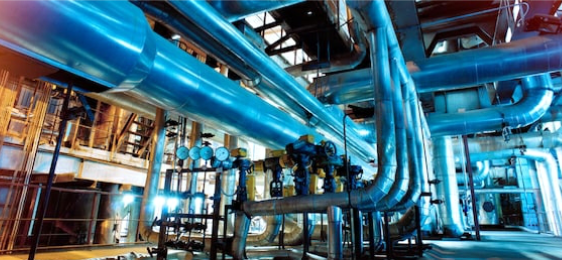
Chemical valves are not only widely used, but also widely used. Of course, chemical valves have higher requirements than ordinary valves. The media used in chemical valves are generally easy to corrode. From simple chlor-alkali industry to large petrochemical enterprises, there are high temperature, high pressure, corrosion resistance, wear resistance, and large temperature and pressure differences.
In the chemical industry, valves with straight-through flow channels are generally selected because of the small flow resistance. There are also valves for shutoff and open media. Such valves are easy to adjust the flow rate and are used as flow control valves. Ball valves and plug valves are suitable for reversing and diversion. The closing parts slide along the sealing surface with a wiping effect. Such valves are suitable for media with suspended particles. The chemical valves that we usually see are shutoff valves, ball valves, gate valves, safety valves, check valves, plug valves, etc. The mainstream of chemical valve media contains chemical substances, mostly acid and alkali corrosive media.
For such high-risk valves, BKK strictly follows chemical standards in the selection and manufacture of valves, and uses raw materials with reliable performance and quality to ensure the safety and reliability of valves.
The mainstream media of chemical engineering valves contain chemical substances, and there are many acid-base corrosive media. The main materials of chemical engineering valves are 304L and 316. Ordinary media choose 304 as the main material, and corrosive fluids combined with multiple chemical substances use alloy steel or fluorine-lined valves.
Agricultural Engineering

As the population continues to increase, global food production needs to increase around the world. However, the effects of climate change continue to make it difficult to achieve optimal crop yields in some places, so the use of best agricultural practices, including irrigation, is needed. Agricultural irrigation can be optimized by using a variety of drive and control valves to ensure that only the optimal amount of water is used and not wasted. Of course, we can provide these pneumatic and electric valves for both small and large irrigation applications.
Where can BKK actuators be applied in the agricultural irrigation industry?
Both electric and pneumatic valves have a wide range of applications in the agricultural irrigation industry, but it takes some thought and consideration to find their best use. The biggest use is to control water flow through automated control loops that require moisture sensors to analyze the moisture level of the soil and thus open/close the water valve accordingly. On/off or flow control valves can be used in this case.
When using control valves, valves such as BKK globe valves and angle valves are often preferred in agricultural irrigation, which have tighter shutoffs compared to other valves. Actuators are suitable for application with these valves because they meet requirements such as torque, general wear resistance, because these applications may require the actuator to be outdoors, etc. In addition, since the valve can be operated in manual mode during power outages, there is flexibility to allow for continuous operation without hindrance.
Biomedicine

Medical and biological valves are sanitary automatic or manually operated valves. The product is suitable for regulating the flow of media in stainless steel pipeline systems. It is manufactured using ISO, GB, DIN, 3A, IDF, etc., using 304 stainless steel or 316L stainless steel as the overall material, and is processed with high-end polishing equipment inside and outside to achieve surface precision requirements. It can meet the special requirements of various media in the food and biopharmaceutical fields. It is smooth, seamless and easy to clean.
1. Made of high-quality SUS304 and 316L, it can meet the special requirements of various media in the food and biopharmaceutical fields.
2. This product is widely used in food and beverage, dairy products, beer brewing, bioengineering, medicine and fine chemicals.
3. It belongs to high-precision sanitary pipelines, and the three-layer high-level internal mirror polishing is easy to disinfect, deodorize, and easy to disassemble and wash.
4. It adopts dead-angle processing to ensure that the medium has no residue and is easy to clean.
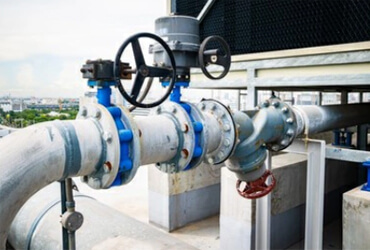
On the basis of inheriting mature industrial valve manufacturing and inspection, we digest and absorb the technology of domestic and foreign industries, and carry out technical research and development and cooperation and exchanges through multiple channels.
BKK will adhere to the premise of quality and take meeting customer needs as its mission, and continue to develop and innovate more environmentally friendly and energy-saving products to serve the society.
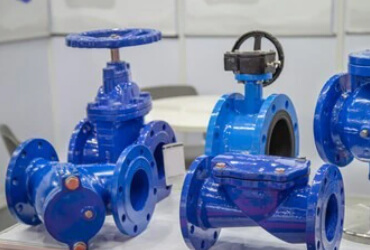
BKK has complete sets of precision casting equipment, sand casting equipment, coated sand casting equipment, free forging equipment, hydraulic forging equipment, heat treatment equipment, German DMG five-axis horizontal machining center, American Hardinge vertical machining center, CNC ball machining center, gantry machining center, CNC large vertical lathe, CNC lathe, spherical lathe, precision grinder, spherical grinder, fully automatic welder, plasma cladding machine, supersonic spraying, welding robot and other complete sets of valve production and testing equipment
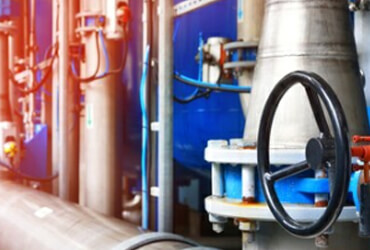
BKK regards quality as the life of the enterprise. Whether it is inspection and testing methods or various system certifications, it strives to be standardized and complete, build a perfect product verification capability, and escort BKK's unyielding product quality. From factory quality system, national sales license, supplier certification to various product verifications and other production qualifications, build a perfect product verification capability.Provide all-round professional industrial valve integration solutions for all types of customers











